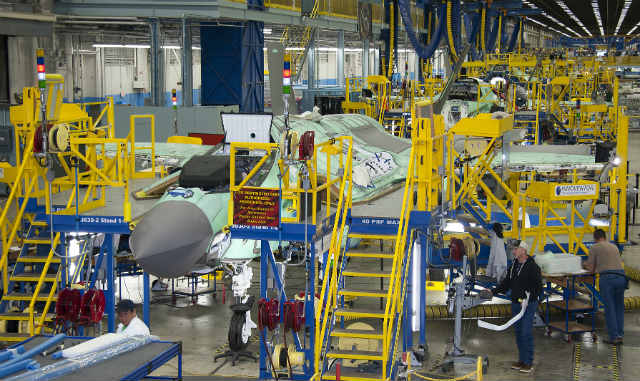Lockheed Martin and its programme partners are putting up millions in investment dollars to redesign manufacturing methods for components of the F-35 Lightning II, in the hope of bringing the per-aircraft cost in line with existing fighters within five years.
Lorraine Martin, who leads Lockheed’s F-35 programme, outlined on 16 September a handful of the several hundred potential manufacturing and materials changes that seek to cut $10 million per year from the aircraft’s unit cost up to 2019. The company has promised that by then, the F-35A will cost $80 million or less.
To accomplish that goal, Lockheed, and engine manufacturing partners Pratt & Whitney and Rolls-Royce have committed to investing a combined $170 million over the next two years on affordability initiatives.
Martin says 600 projects “across the entire supply base” are in the works to streamline production and reduce manufacturing costs. At least 66 projects were determined to have sufficient return value and are under way, she says.
She outlined several million dollars of investment that Lockheed is hoping will deliver orders of magnitude in returns over the programme of record for 3,000-plus F-35s.
“We’re going to change things about how we do the aircraft, or in some cases, we’re going to actually change the aircraft,” Martin says. “It’s really important that we do that in concert with the US government.

Lockheed Martin
“There are things we can do that drive cost out of the aircraft that also make it easier to maintain, that … [reduce] weight. … Every project will go through scrutiny [by US Air Force officials] before it is approved.”
Using additive manufacturing, often called 3-D printing, rather than forging and milling to produce a bowframe that crosses the canopy, could save $31.5 million over the programme of record at an investment of just $342,000, Martin says.
The company invested $360,000 in redesigning the process of manufacturing the aircraft’s rudder spar components – this time favouring forging and machining – that it estimates will result in almost $205 million in savings, Martin says.
Finding a new method for painting fuselage panels while also performing other manufacturing processes – the existing paint process takes place in a controlled environment where other operations cannot take place – will save an estimated $27 million from an initial investment of $741,000.
Lockheed has also decided to make certain components out of cheaper materials that can also meet structural integrity specifications, Martin says. By investing $946,000 in redesigning the vertical tail ribs, the airframer expects to save $121 million. Engineers determined that the ribs could be made of aluminium, instead of more expensive titanium without sacrificing structural integrity, she adds.
Source: Flight International



















